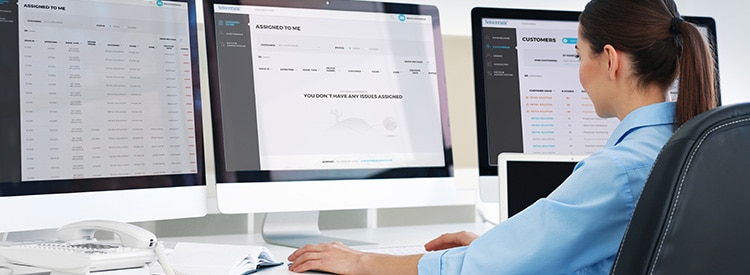Article
How Store Traffic Directly Affects Staffing, Labor Hours

Ready to see how Sensormatic Solutions can transform your bottom line?
Contact UsStay one step ahead with our articles, insights and latest news.
See more

Article

Of course, everything in retail begins and ends with sales, notes Brian Field, senior director of advisory services at ShopperTrak. And sales are made up of two things: average transaction size and sales per shopper.
Field notes that the size of the transaction and the amount of sales made per consumer in the store is not always within the direct control of the retailer. However, brands can control the expense of staffing and labor on the operations side. Therefore, many retailers decide on how to staff based on the amount of sales divided by the labor hours in a specific store location. But there is a problem with this metric.
“The more you cut your labor hours, the better your labor looks,” Field says. That’s why ShopperTrak advises clients to instead measure using STAR, or shopper to associate ratio. And that number can go up or down, depending on the level of service that a brand is intending to provide.
So while a retailer may have minimum control over basket and transaction size, the company can alter associate selling skills, scheduling, training and so on. Plus, retailers can impact flow of traffic by altering the look of a store, customer affinity programs and clienteling.
In addition, Field says that when measuring a store’s performance, a retailer needs to factor in the store’s location. For instance, is it a mall with a lot of traffic, or a street front with fewer consumers?
RELATED: Mall traffic up with teens
“Smarter retailers are segmenting stores on the understanding of socio-demographics and the flow of traffic,” he said. “If I’m setting goals for a store in a mall of what I want conversion or sales to be, it’s going to be a lot different than the goals for a small strip center store. Even a customer has a different shopping expectation in those centers, so retailers need to remember to treat locations uniquely different.”
When using ShopperTrak’s STAR metric, Field says that the lower the ratio, the closer you come to one associate for every one shopper, and the higher the expectations should be for sales per customer.
“Smarter retailers are getting more strategic about labor allocation, when it comes to the unique DNA of locations in each market,” he said.
As the important holiday sales season is close in sight, retailers need to be thinking about traffic and labor hours equations. According to ShopperTrak data, in-store activity has been extremely consistent since 2011: Black Friday is still the highest traffic day of the year, followed by the weekend after it. In 2016, the top 10 busiest days accounted for nearly 44% of the total holiday season’s brick-and-mortar traffic.
“Retailers need to be cognizant of this and consult with traffic companies to learn traffic patterns. If you plan your product being in-store on those days, you base your staffing and most capable and largest allocation for those days,” Field said.
While everyone knows that an omnichannel view is important, Field says this term relates to the customer’s view, not necessarily how retailers operate both online and in-store.
RELATED: BTS sales to rise more than 3%
In the midst of back-to-school (BTS) season, Field offers a safety tip to keep retailers strong throughout the quarter: Ramp up staffing for BTS and then keep that temporary staff on through the Christmas holiday. Why? According to the math, it would cost a company more money to go back and hire and train another round of staff again than to keep on those who were hired for BTS.
“The cost to hire and to recruit and to train, you will lose money and lose well-trained associates,” he said.
A version of this article, by Jacqueline Renfrow, was originally published in Fierce Retail and featured ShopperTrak’s Senior Director of Advisory Services, Brian Field.



